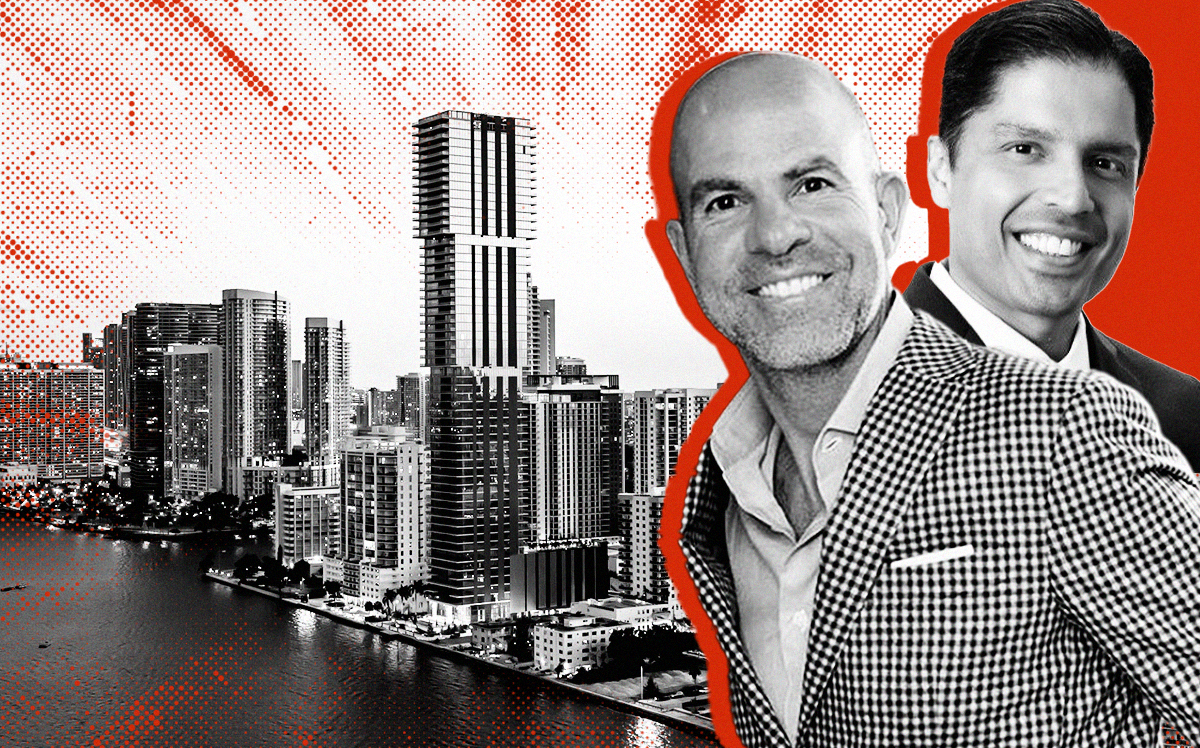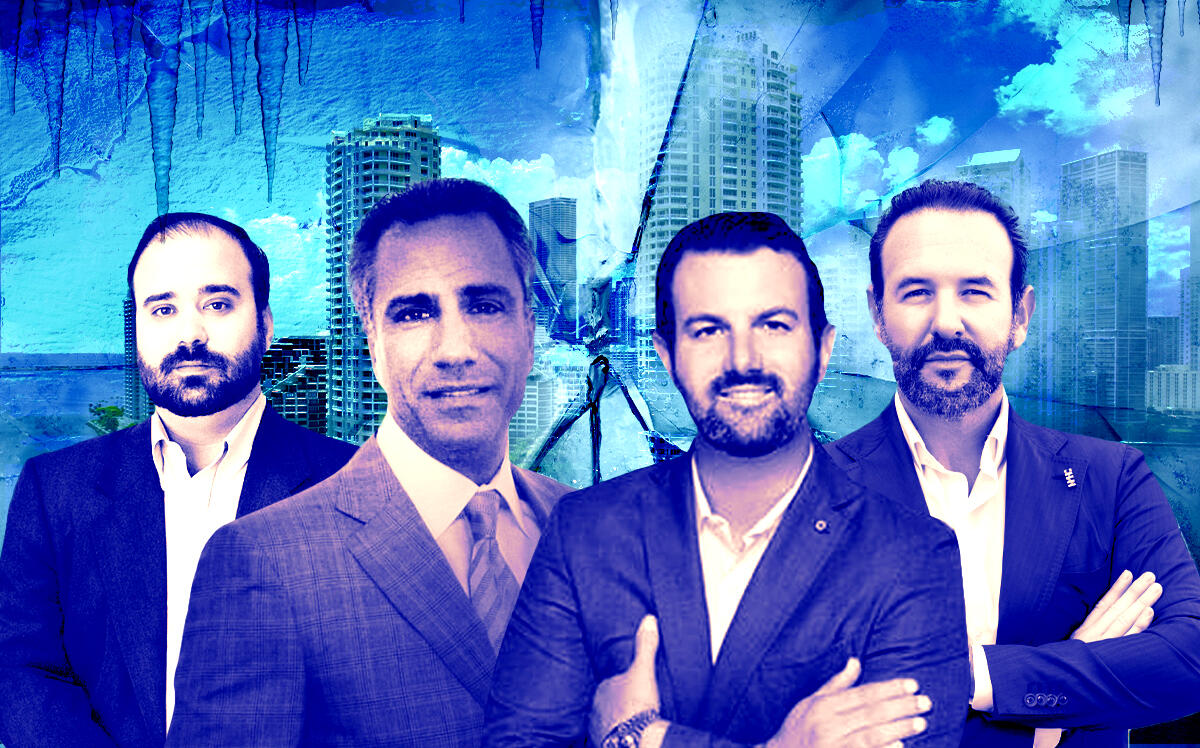Developer Jerry Aguirre has plans for a 220-unit apartment complex in West Kendall. But until next year, or maybe even 2025, the community will exist only on paper, as the site remains untouched by construction crews.
“We want to start construction,” said Aguirre, co-founder of Miami-Dade County-based SH Communities. “But we need to hold it.”
The project is on pause due to a series of headwinds that are causing a perfect storm for developers. In the mix are rising interest rates, costlier building materials and labor, plus skyrocketing insurance premiums.
“We are going through all of the entitlement process, getting all the approvals in place to be ready when something gives, whether it’s the construction costs or the capital market,” Aguirre said.
It’s a common story across South Florida. Developers are focused on zoning and site plan approvals, but they won’t start construction until some aspect of their building costs moderates, experts told The Real Deal. The pause on development projects isn’t across the board, as many developers are well-capitalized or secured preferred equity infusions with ease, while others were not so lucky.
Insurance and construction hard costs had been already steadily increasing. This year, commercial carriers will hike premiums by 50 percent, though a doubling of rates won’t be out of the question, according to a Yardi Matrix report. This comes on the heels of last year’s hikes of 15 percent to 30 percent.
Tack on higher interest rates, which are hovering at 7.5 percent to 8 percent for construction loans, whereas they were around 4.5 percent, and it makes for an “unprecedented” trifecta of factors, said Marc Suarez, managing director at lender Lument.
“You can have one of the three [factors] or maybe two of the three but you can’t have all of the three,” he said. “I will call it what I believe it is: a phenomenon. I mean, the deals just don’t underwrite.”
All in the multifamily
Developer Gilbert Benhamou isn’t hitting the brakes on either of his planned mixed-use projects in Miami Gardens and West Palm Beach.
He is, however, hitting the brakes on searching for additional real estate opportunities.
“We are not looking to put a shovel in the ground on new projects until the next 12 months,” said Benhamou, CEO of Aventura-based Immocorp Capital. “Only because of the capital markets. We cannot ignore that the high interest is affecting real estate.”
This new construction anxiety is a U-turn from the past two years. As South Florida became a magnet for out-of-state businesses and residents, rents grew by leaps and bounds and developers pounced on projects.
Multifamily was one of their top choices. Demand for apartments reached never-before-seen levels and so did rents, with South Florida outpacing the nation with a 58 percent rate growth for the two-year period that ended in March of last year.
Now, multifamily is the asset class developers are pressing pause on. Roughly 5,000 apartment units across South Florida that should have broken ground by now are on hold, Suarez estimates, based on his conversations with borrowers and colleagues.
Gus Cabrera, president of the Latin Builders Association, said he isn’t seeing much of a slowdown in construction. Many of his members are busy, though they could be working on projects that secured financing before the interest rates shot up.
But “it feels like people are bracing” for a slowdown, Cabrera said. “The impact will be seen in traditional multifamily and garden-style apartments.”
At issue: As demand slowed, so did rent growth. South Florida rents went up by 9.6 percent in January, year-over-year, according to the Waller, Weeks and Johnson Rental Index. But in January, rents fell by 0.12 percent from December.
“As a result of interest rates and high construction costs,” said Michael Wohl, principal of Coral Rock Development Group, “the cost to build is much higher than what they [developers] would get in rents.”
Market paradox
In a way, South Florida is a market of extremes. While some developers have to pause new construction because of the high costs, others still say they can piggyback on the benefits from the in-migration of the past two years.
Sergio Pino is among those who are well positioned to weather the storm.
His Century Homebuilders Group is about to start building two eight-story buildings with 408 apartments, combined, in the city of Doral. It’s phase II of his project, with completion of the first phase consisting of 329 units in two six-story buildings expected in September.
Between higher construction and borrowing costs, the second phase will price out to roughly $15,000 more per unit to build than the first phase, said Pino. Because banks are getting stingier with lending and pulling back on the loan-to-cost ratio, phase two will require about 35 percent more equity from the developer.
This is not stopping Pino.
“In the end of the day, it may end up being 40 percent or 48 percent” more equity, he said. “It doesn’t matter. Equity is not an issue.”
For one, he can fall back on his equity partner, Colombian construction behemoth Conconcreto, which also is a general partner and contractor on the project. And despite slower rent growth, rates are already high, and so is tenant demand in Doral. “You offset the negative impact with the positive impact,” Pino said.
Suarez, of Lument, isn’t as convinced that rent collections will continue to balance project financials. For one, inflation is eating up tenants’ paychecks.
“We are hearing there are a lot more delinquencies on rent,” he said. “I am a realist and I am from here. The folks I grew up with, the firefighters, the teachers … it’s tough out there” for them.
Developer Tal Levinson is also a realist.
“There’s no mystery that construction costs are high,” he said. “Also, banks are becoming much more picky with which projects they want to give construction loans to.”
But Levinson is also an optimist. He and Eric Malinasky plan a six-story, roughly 336-unit apartment project in Fort Lauderdale’s up-and-coming Progresso Village neighborhood. They don’t plan to start construction until late 2024. That’s not due to delays caused by market challenges but because they still need to get project approval.
By then, interest rates should stabilize and costs for some materials already are showing signs of leveling off.
“We feel that the timing is going to work perfectly because we think by [late 2024],” Levinson said, “[The market] will be in a good place.”
Read more



